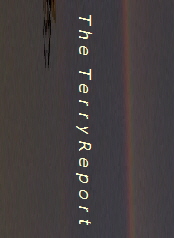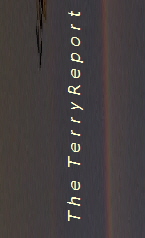|
I have been giving away my content to the Times online for years. Only recently have a gotten even a minimal (non-paying) benefit from participating in the comments section. I think the Times probably figures it was paying just the right price for my comments and those of many others, some of which reflect years of study, knowledge accumulation and careful analysis.
In the oft chance that some of the Times bigs are going to read down this far, I will now give away some free consulting. (I prefer to be paid and will definitely charge for the whole vision of where \"newspapers\" need to go to survive.) I am in the news technology business and worked on the early development of digital video in 1991 and '92, which has revolutionized the world.
Online and the "paper" are two different animals. The Times is trying to protect the paper side by charging for the electronic. Instead, the Times should understand that it needs to create half a hundred or more new ways to engage the online reader. Reader and viewer engagement is the game, news, per se, is actually a secondary function, most of the time. Once readers are engaged on various levels, they generally don't mind paying something. To engage readers, the Times and other media outlets would have to stray pretty far from the core mission of hard news, but the choice is to do it or slowly fade to black (or red, as the case might be).
Most subscription services start out at a low price point and go higher once people have become accustomed to paying and realize the value of what they are getting. Ten million people paying two dollars a month produces more revenue than one million paying fifteen. We saw this kind of careful price escalation with bank's ATMs: first they were free, then they were 50 cents per use, now they are being tested above 4 and 5 dollars per use (that this is a huge rip makes no difference, because people just shrug and pay it for the convenience of getting cash). Cable subscriptions were once 20 to 30 dollars, now they top 100 per month and billions are being made. I assume the goal of charging 15 a month for the Times online is to get enough to at least have an impact on the news coverage budget.
I have run my own numbers on subscription models for newspapers and they don't work. The Times is one of the few in the world where they might work. One million subs paying 15 a month, however, is only 180 million per year. Not much in the world of really big time journalism as practiced by the Times, the Wash Post and a few others. The numbers just don't add up. Since about 70% of the cost of a major city newspaper is in paper stock, ink and delivery, the point at which that cost no longer is paid becomes a crossover point to the electronic era, but it is one that almost no one working now in traditional print media can even imagine without upset.
The basic problem is that news is not a vital commodity for most people. They don't believe they have to have it (meaning a particular approach or insight) for business and personal decisions. So, you don't get the mentality of saying, \"If I don't buy this, I am going to lose a lot of money,\" or it is going to cost me in other ways. Its just news. For a significant but small group of people, the content is vital and they would pay considerably more than 15 dollars a month to have access to a premier news source. There probably should be some way that people can buy specific articles related to their field of work, etc. Otherwise, they could just sneak out of the Times, do a search on Google and come back to the one they need.
I have been working on these issues for a number of years and I believe I have some of the answers to the future of newspapers. Not all of the solutions revolve around the Internet, smart phones or mobile apps. We have now had more than 15 years of explosive Internet growth. Instead of adapting and leading the way, traditional media have reacted and reacted again, without a clear vision of where they should go. This is yet another reaction, a test. My guess is that it will work to a degree and fail in the larger mission. Given ten more years, it might ultimately be successful, but in so doing it will weaken the broad impact and appeal of the Times online. A difficult trade, in other words.
More aggressive measures need to be taken now, when the enterprise of what was once print journalism is still strong enough to pay for the new pathways. The great danger is waiting while circumstances get worse. This is not really that difficult. If one approaches it from a fortress mentality of protecting the newspaper franchise, however, it adds to the difficulty.
Yes, I will pay, at least for a time. Yes, I will miss the online forums being open to everyone, because they are the only place I can find on the net to comment into a managed space instead of into a noisy sewer.
If you want the rest of the answers to your future, give me a call.
Doug Terry 3.17.11
|


















































































































































































































































